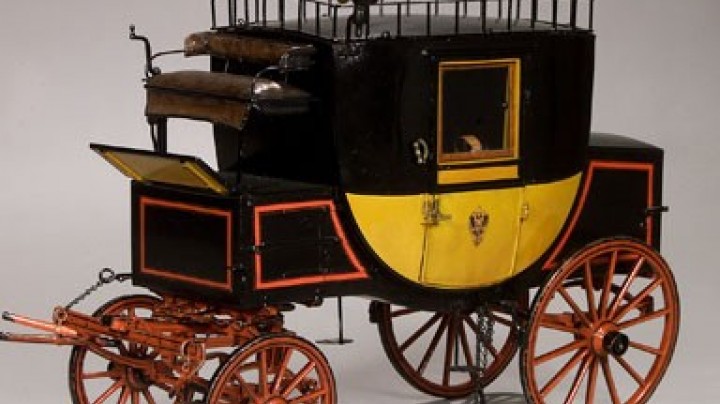Two rulers in an ‘automobile’ – Of means of transport for the emperor and for his people
We have no record of what Franz Joseph and Edward VII talked about in the car. But the Austrian Emperor did not think much of his ‘spin in the motor’.
It took the King of England to persuade him to take his one and only car ride – and Franz Joseph could not summon up much enthusiasm for this technical innovation. Rumour has it that his comments on the ride he took in Bad Ischl in 1908 went as follows, ‘It stank and one couldn’t see anything.’ The emperor was also sceptical about other new means of transport; he even described cycling as a ‘real epidemic’.
One of the first means of mass transport for the people of Vienna was the so-called ‘omnibus’, a carriage drawn by one or more horses. The Latin word ‘omnibus’ means ‘for all’. The omnibus ran on fixed routes and to fixed timetables, as did the horse tramway from the 1860s (this was a carriage running on rails and pulled by horses), and the electric tram from the 1890s. On the other hand the fiaker was a kind of horse-drawn taxi: according to the Austrian National Encyclopedia it was ‘ available from 7 a.m. until approximately 10 p.m.’.
The streets in Vienna were certainly crowded, because in addition to public transport and hire-coaches any number of private saddle-horses and coaches belonging to the aristocracy and the Court were on the move. There were also pedestrians and – at a later date – motorists.
The Metropolitan Railway (Stadtbahn), which opened between 1898 and 1901, provided the Viennese with even more scope for mobility. However, since the trains were steam-hauled the smoke caused problems. There were complaints that ‘a sacrifice of smoke had been made to the idol of traffic.’

















